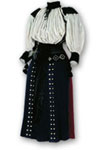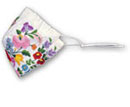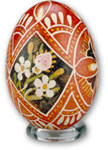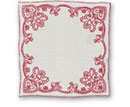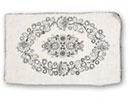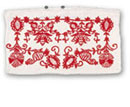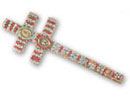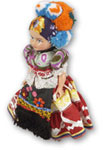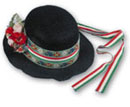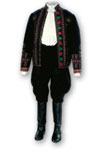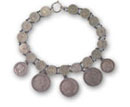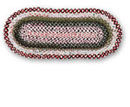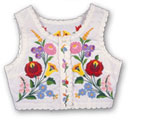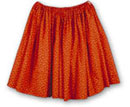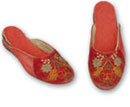|
|
|||||||||||||||||||
Hungarian ImmigrantsMost Hungarians living in Canada today arrived in the country as refugees after the anti-Soviet revolution in Hungary in1956. Never before or since had they come in such large numbers. However, there are also Hungarian-Canadians whose ancestors came to this country over hundred years ago, and many who arrived here since the late 1950s. In recent Canadian population censuses, over 120,000 of Canada's residents claimed Hungarian as their ancestry. The greatest concentrations are in metropolitan centres, in particular in Toronto, Montreal and Vancouver. The immigrants who came before the 1930s were mainly economic migrants. They tried to escape poverty in some parts of the Hungarian countryside as well as an antiquated social system in which poor peasants enjoyed little or no respect. Those who came later were predominantly political refugees who wanted to escape political persecution and/or foreign domination in their homeland. Many of the 1956 refugees feared retaliation by the Soviet authorities and their Hungarian allies for their participation in, or even just sympathy for a revolt against communist rule. Many of the Hungarians who had come to Canada in recent decades came because they felt discriminated against in the neighbouring states that have Hungarian minorities. The majority of Hungarian immigrants to Canada have been Roman Catholics, modern Hungary's population belonging mainly to the Roman Catholic Church. There were also many Eastern-rite Catholics especially among the pre-1930s immigrants. After the Second World War, Protestants were no longer under-represented among the Hungarians that came to this country. Jews usually made up a very small portion of Hungarian immigration. The most significant exception to this trend happened during 1956-57 when several thousand people of Jewish background came to Canada with the influx of the refugees. Early Hungarian immigrants found it arduous to adjust to the life of pioneer homesteaders on the Canadian prairies. Lacking a good education and knowledge of English, the agricultural workers who came in pre-1914 or during interwar years were usually doomed to manual labour. Still, through hard work and entrepreneurial spirit, some of them managed to prosper. Many members of the "old immigration" for example, became tobacco farmers in southern Ontario. Most of the newcomers of the Second World War era had a somewhat easier time in "getting ahead" in Canada. Many of them had a better education than the early arrivals, some of them had marketable skills, and most of them found it easier to learn English (or French) since they had been exposed to learning new languages either in the Hungarian school system or in their travels as displaced persons or refugees in Europe and elsewhere. Helping Hungarian newcomers in the process of adjustment to Canadian life were the immigrant institutions Hungarians created in Canada. One of the most important of these were ethnic churches, as well as self-help associations. But, for those who immigrated in the mid- and late twentieth century, help in integration was done through non-ethnic mainstream associations, belonging to professional organizations or through the help of ordinary Canadians and immigrant serving agencies. Today, Hungarian immigrants and their descendants contribute to many spheres of Canadian life. Remarkable contributions have been made to such diverse fields as statistical analysis, forestry science, cinematography, business, finance, computer technology, music and sports. Some sports, such as water polo and fencing were introduced to Canada in a competitive way by Hungarians. Hungarians, active in many aspects of intellectual and cultural life, value the culture they brought with them. This includes the cultural artefacts they created once in their new homeland or those they brought here from their ancestral lands. Some of these can now be discovered in the collection of Canada's Museum of Civilization. Hungarian Folk ArtIn this section of our web module you will find some examples of Hungarian folk embroidery. Some characteristics of this art include proportioned patterns with delicately stylized flower motifs, variations of large and small designs, vivid and sometimes contrasting, but always harmonious colors. Hungarians used embroidery to embellish the clothing of women and men, to decorate the articles of the home, such as pillow and sheet ends, towels, table cloths, wall-hangings and they never forgot the church, which was also decorated with embroideries. This art is constantly changing and growing depending on the availability of fabrics and threads and the taste of the people as well as the inventiveness of the creator. However, certain ancient designs are still present after hundreds of years and are used in different forms today, still adorning the clothes, homes and surroundings of Hungarians wherever in the world they may live. References For a detailed overview of the Hungarian experience in Canada see N.F. Dreisziger et al., Struggle and Hope: The Hungarian Canadian Experience (Toronto: McClelland and Stewart, 1982). For brief summaries see Carmela Patrias, The Hungarians in Canada (Ottawa: Canadian Historical Association, 1999); N.F. Dreisziger, "The Hungarians," the Encyclopedia of Canadian Ethnic Groups (Toronto: University of Toronto Press, 1999), 660-74; and the same author's "Rose-gardens on Ice-floes: A Century of the Hungarian Diaspora in Canada," Hungarian Journal of English and American Studies, 6, 2 (Fall, 2000): 239-58. |
Bibliography · Links · Credits · Index

